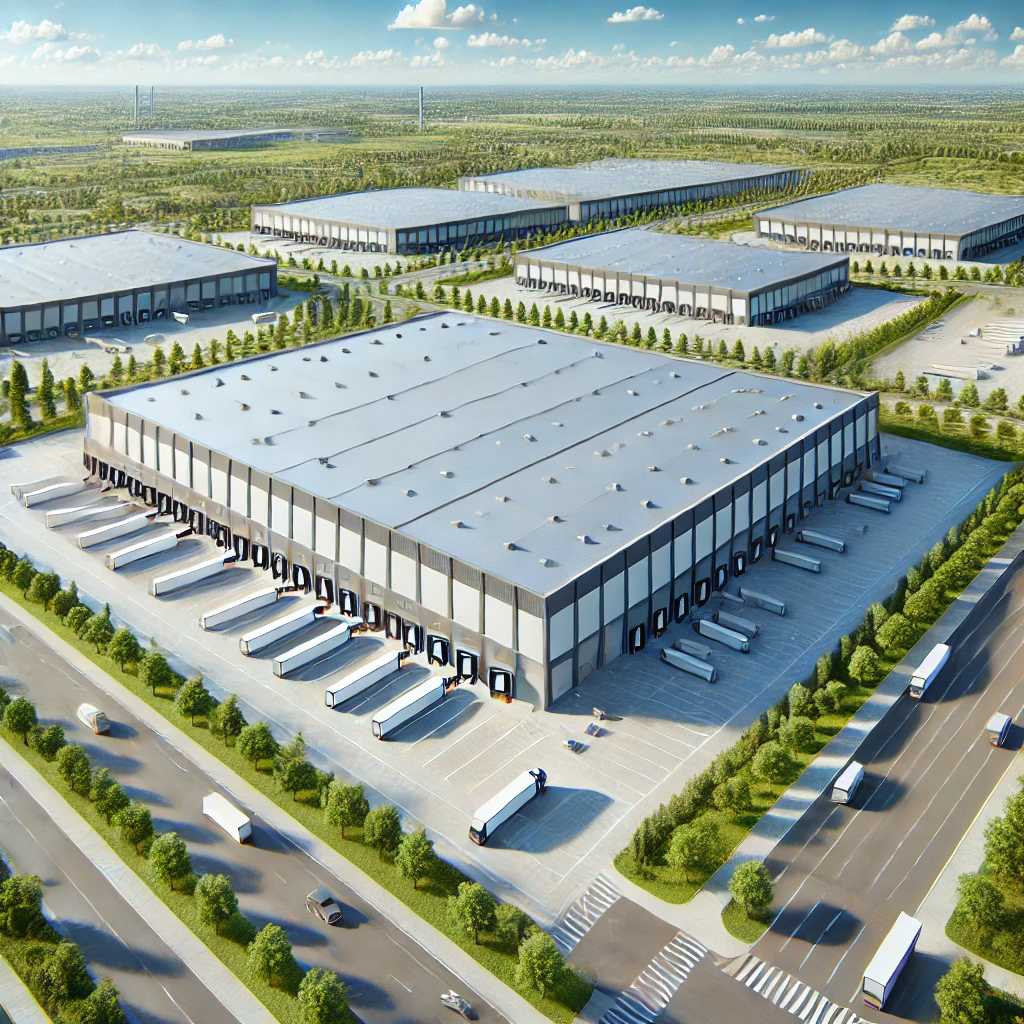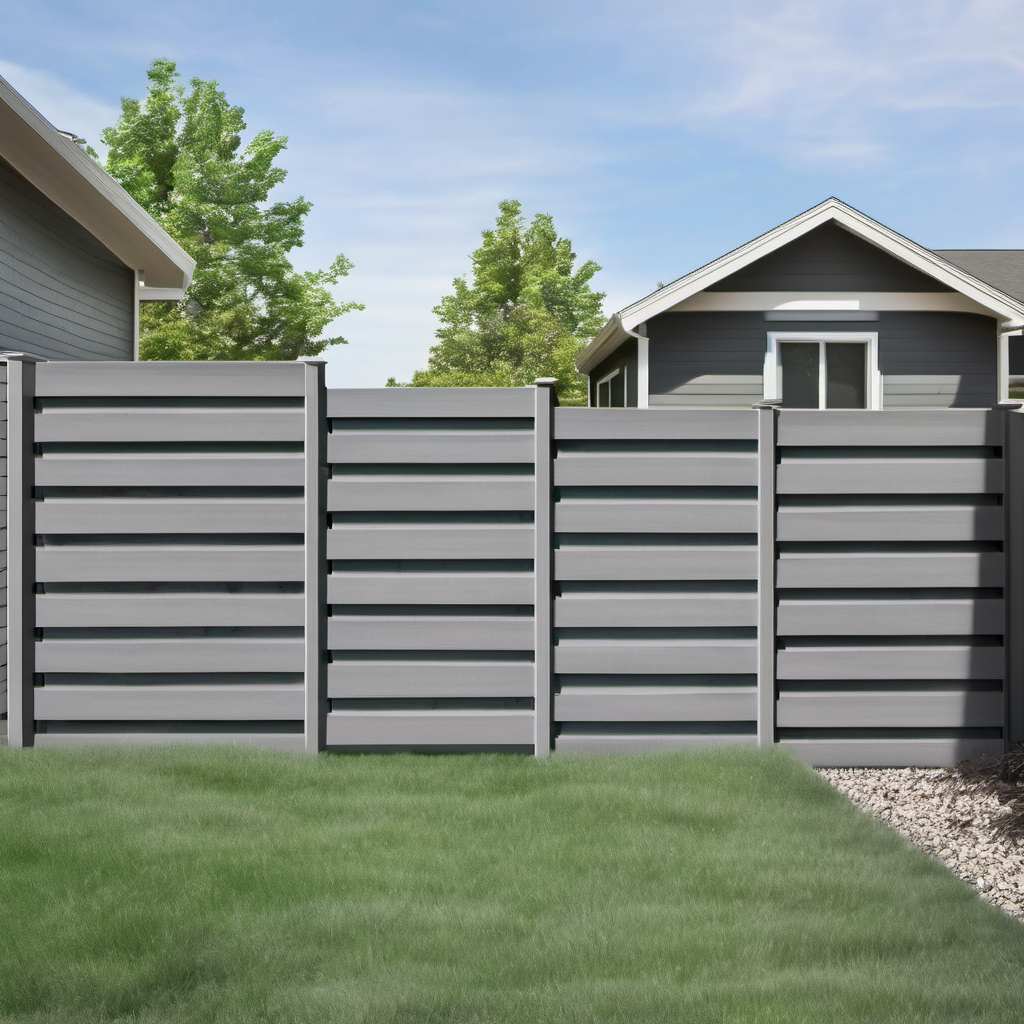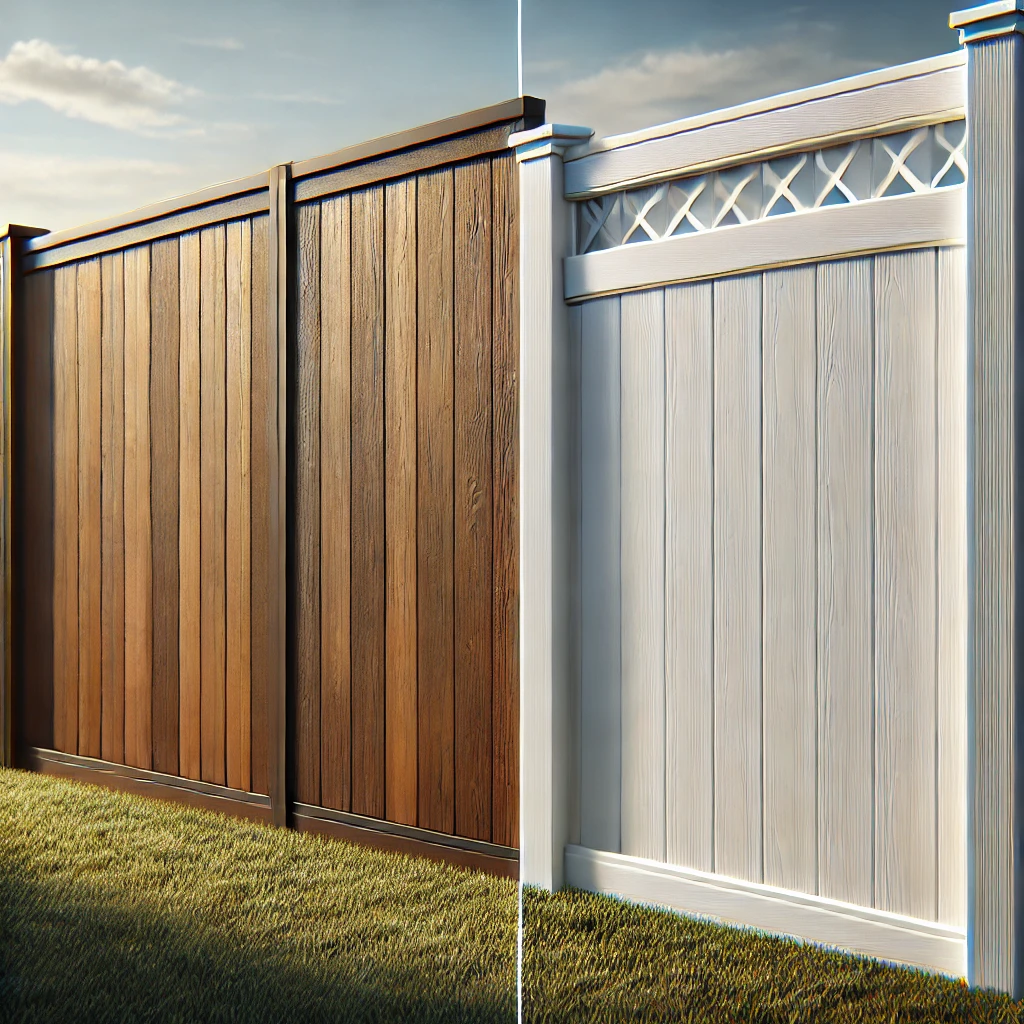When deciding between composite and wood fences, you’ll find that both options have distinct advantages and drawbacks. Composite fences offer impressive durability and minimal maintenance, while wood fences provide a classic look but require more upkeep. Although the initial cost of composite fencing is higher, its long-term benefits might sway your decision. Yet, wood’s natural aesthetic and lower upfront expense could also be compelling. So, which one truly fits your needs and budget better? Let’s explore the nuances to help you make an informed choice.
Key Takeaways
- Composite fences have a lifespan of 30-50 years, while wood fences last 15-20 years with maintenance.
- Composite fencing requires minimal maintenance, unlike wood, which needs regular painting or staining.
- Initial installation costs are higher for composite fences ($25/foot) than wood fences ($15/foot).
- Composite fencing is made from recycled materials, making it more environmentally friendly than wood.
- Composite fences offer long-term savings due to their durability and reduced maintenance needs.
Durability and Maintenance
When it comes to durability, composite fences clearly outshine wood fences. Composite fences typically last 30 to 50 years, far surpassing wood fences, which generally last 15 to 20 years with regular maintenance. This is due to the advanced materials used in composites, which are inherently resistant to harsh weather conditions, pests, and decay. As a result, composite fences maintain their structural integrity over time with minimal upkeep.
In contrast, wood fences are prone to rot, warping, and insect damage without proper care. They require frequent maintenance, such as staining and sealing, to prevent deterioration. Composite fences, on the other hand, only need occasional washing, significantly reducing long-term upkeep efforts.
Installation Costs and Long-Term Savings
When considering installation costs, you’ll find that wood fences are initially more affordable, averaging around $15 per foot compared to the $25 per foot for composite fences. However, the higher initial expense of composite fencing is offset by lower maintenance costs and a longer lifespan, offering substantial long-term savings.
Though pricier upfront, composite fences require minimal maintenance and last significantly longer, making them a more cost-effective option in the long run. This durability and low upkeep translate to fewer replacement costs and reduced overall expenses over time.
While wood fencing might be more appealing for those on a tight budget initially, it’s important to consider its higher maintenance expenses over time. The total ownership costs of composite fencing are lower due to its longevity and minimal upkeep requirements, making it the more economical choice in the long term.
Aesthetic Appeal
When evaluating the aesthetic appeal of composite versus wood fences, each material offers distinct visual advantages that cater to different tastes and design preferences.
Composite fences provide a uniform and consistent appearance, mimicking the look of wood with enhanced color variations and finishes. This makes them suitable for various contemporary landscapes, offering a modern, sleek look with clean lines that complement minimalist and modern design styles.
On the other hand, wood fences boast a rustic charm, with unique grain patterns and natural color variations that create a warm and inviting aesthetic. Wood’s organic feel appeals to homeowners who favor traditional or classic designs. Its flexibility allows for extensive customization, enabling unique fence designs that match or enhance your home’s architectural style.
However, it’s essential to recognize that while composite fences maintain their color and finish over time without fading, wood fences require regular maintenance, such as staining or painting, to preserve their visual appeal.
Environmental Impact
Beyond their aesthetic appeal, the environmental impact of composite and wood fences is a critical factor to consider. Composite fencing, made from recycled materials, offers significant sustainability benefits. By repurposing plastic and wood fibers that might otherwise end up in landfills, composite fences help reduce waste and minimize the need for new raw materials, mitigating deforestation.
Additionally, the manufacturing process for composite fencing typically requires less energy than the extensive processing needed for traditional wood, resulting in a smaller carbon footprint. Composite materials can also be recycled again at the end of their life cycle, whereas wood fencing often ends up in landfills, decomposing and producing methane, a potent greenhouse gas.
Moreover, composite fences are resistant to decay and pests, which reduces the need for chemical treatments. Wood fences, on the other hand, often require harmful pesticides or preservatives to maintain their durability, contributing further to environmental degradation.
Conclusion
In conclusion, composite fences offer superior durability, lasting 30 to 50 years with minimal upkeep compared to wood fences. Although the initial cost is higher at $25 per foot, the long-term savings and low maintenance make it a wise investment. Plus, composite materials are eco-friendly and enhance property resale value. Ultimately, choosing composite fencing provides substantial benefits in durability, cost-effectiveness, and environmental impact over traditional wood fencing.
More about Composite Fences

Composite Fence Manufacturers
Diana Sawyer

Cost of Composite Fencing
Diana Sawyer

Pros and Cons of Composite Fencing
Diana Sawyer

